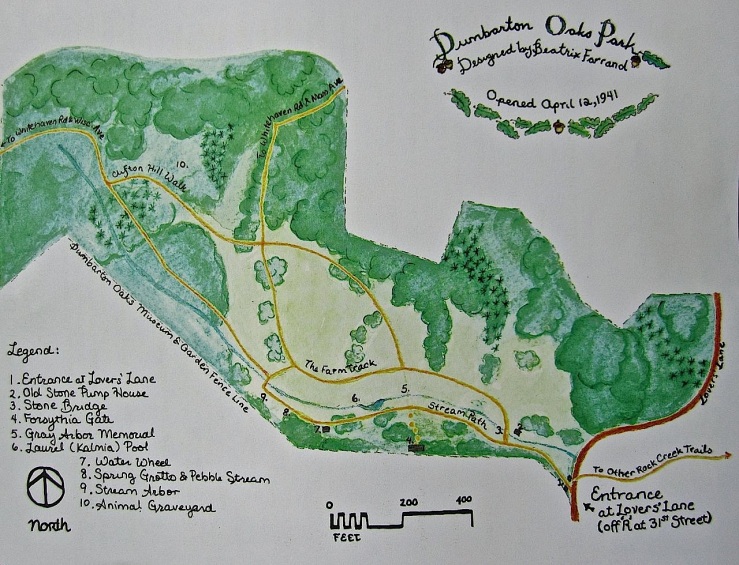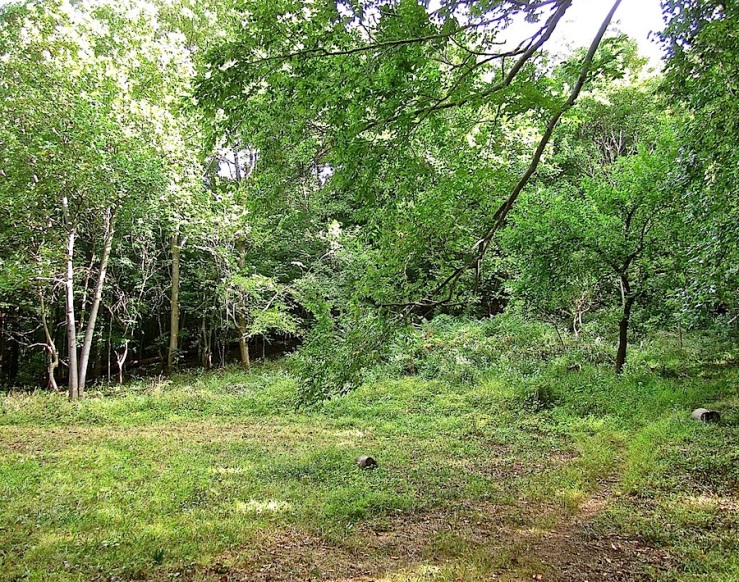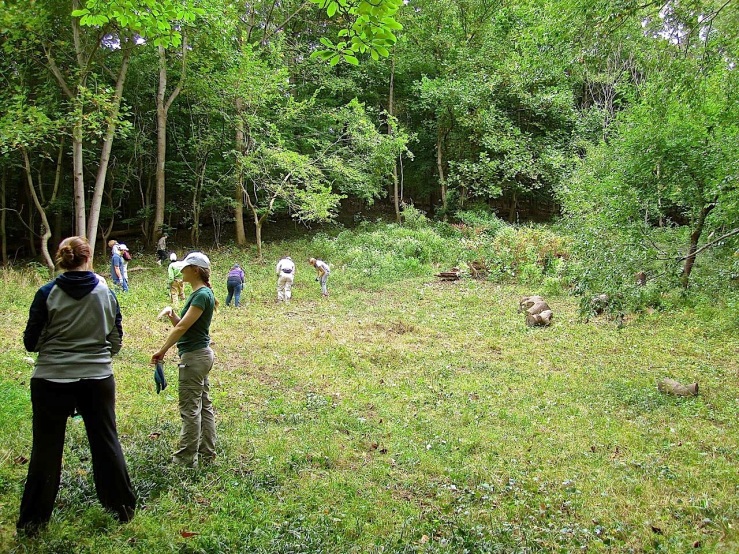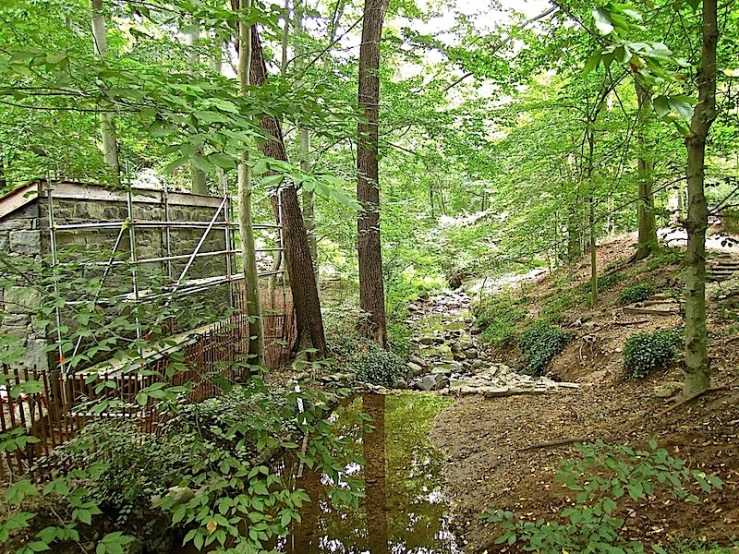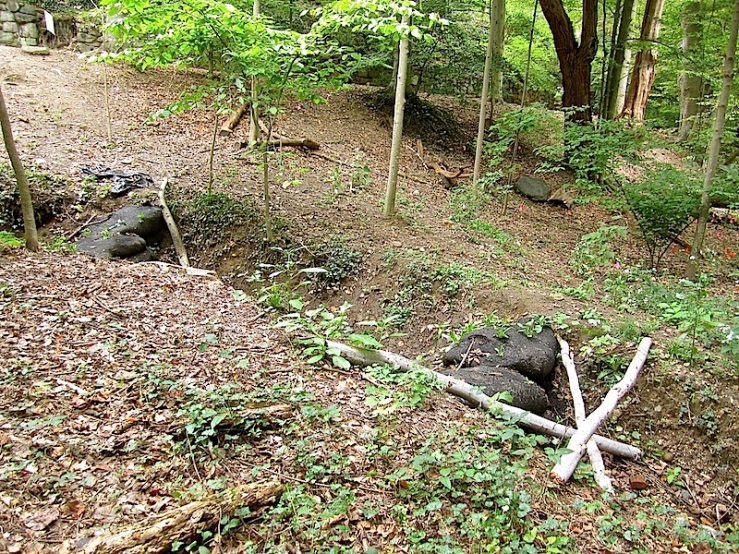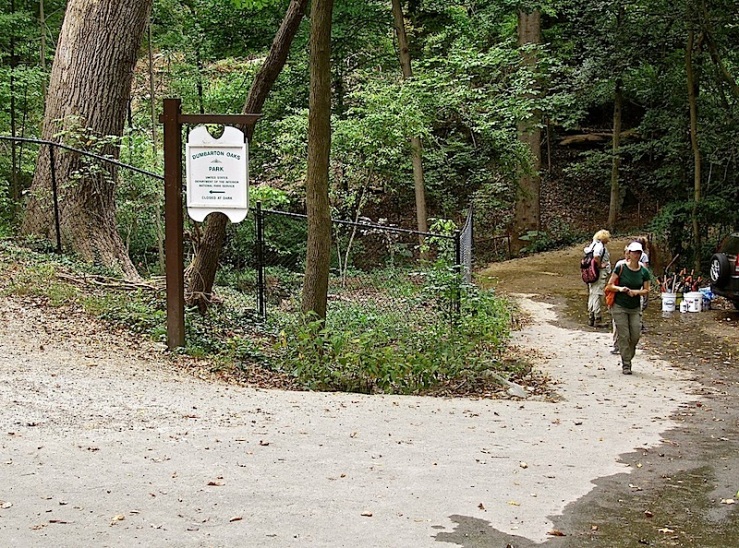 Is this not a picture of fun? Two buckets full of loppers, pruners, saws, and even a couple of machetes.
Is this not a picture of fun? Two buckets full of loppers, pruners, saws, and even a couple of machetes.
Our recent visit to Washington, D.C., coincided with a September Saturday “Weeding Day” at Dumbarton Oaks Park, sponsored by the Dumbarton Oaks Park Conservancy. I have wanted to volunteer for one of these days for a couple of years — ever since learning about the group’s efforts to restore this Beatrix Farrand masterpiece, which is located behind the more famous Dumbarton Oaks Gardens.
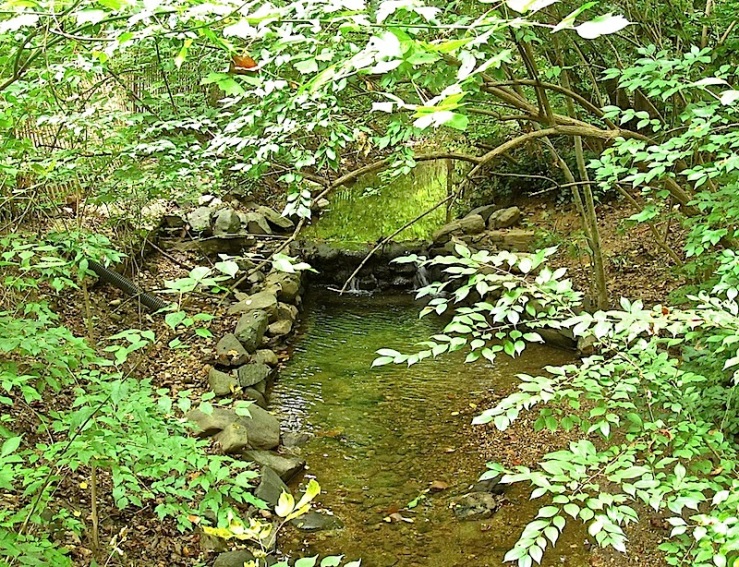
The morning started with Ann Aldrich, the Conservancy’s Program Director, making sure we knew how to recognize poison ivy. Then we all doused our exposed skin in Tecnu, a soap that mitigates the effects of exposure.
We learned that poison ivy was not one of the weeds we would be pulling — it is native to the area and an important source of (protein) food for birds.
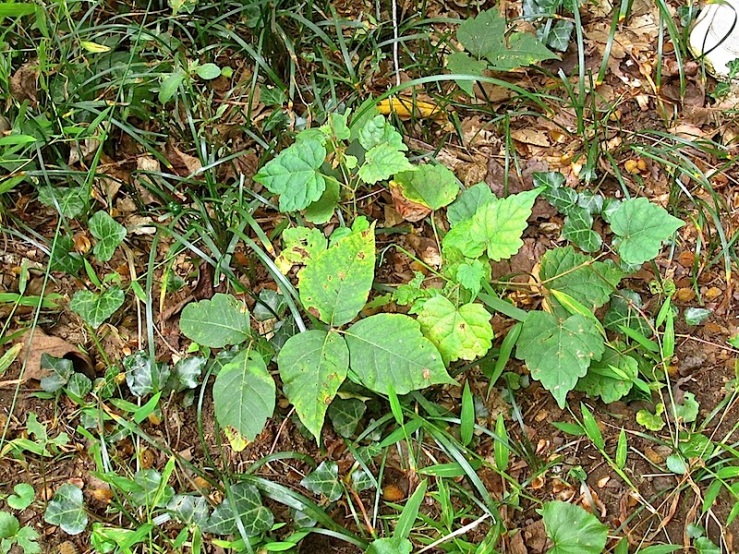
Our enemies were Japanese stilt grass, pokeweed, English ivy, tree of heaven, wild grape, porcelain berry vine,* and multi-flora rose.
We were clearing a meadow area just above the stone pump house (no. 2), on the right in the drawing below.
Below is a picture of the area before we started. . .
And below is what it looked like after we finished (about 3 1/2 hours later). We probably would have cleared out more above the old log, but there was a bees’ nest on the other side.
Ann has spent many a weekend this summer leading garden enthusiasts, college students, and D.C. schoolchildren in “weed warrior-ing.” There is so much to do, and I am so impressed with the group’s ambitious commitment to this lovely place.
As I was leaving, I stopped to admire the Arts and Crafts-style stonework of the dams that Farrand installed all along the little stream that runs through the park.
The Conservancy was just about to have a contractor make repairs to this area when the government shutdown put a halt to even volunteer efforts. (The Conservancy supports and is supervised by the National Park Service.) I hope the work is underway now. Earlier this year, the group was able to place compost filter socks (below) near the Lovers’ Lane entrance to the park.
They are preventing further damage from the water runoff that comes shooting down the small asphalt road that runs along Dumbarton Oaks Gardens.
I had a great time and I will definitely do it again when we move back to Washington (the park is an easy walk from our house). If you live in the D.C. area and would like to help, click here and ask to be put on the Conservancy’s mailing list.
Dumbarton Oaks Park Conservancy is also holding a fundraiser on November 7, 6:30 p.m., at The Josephine Butler Parks Center. Author Richard Guy Wilson will speak on “Edith Wharton at Home: Life on the Mount.” (Wharton was Farrand’s aunt.) Tickets are $35; click here for more information.
* Farrand actually specified porcelain berry vine to be grown over her arbors, which just makes me shudder.

